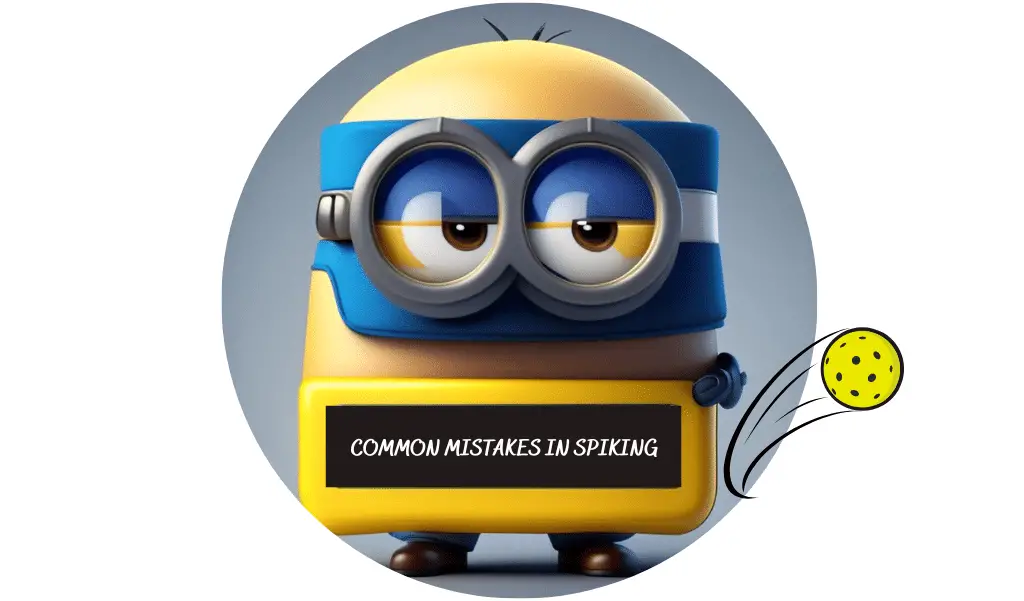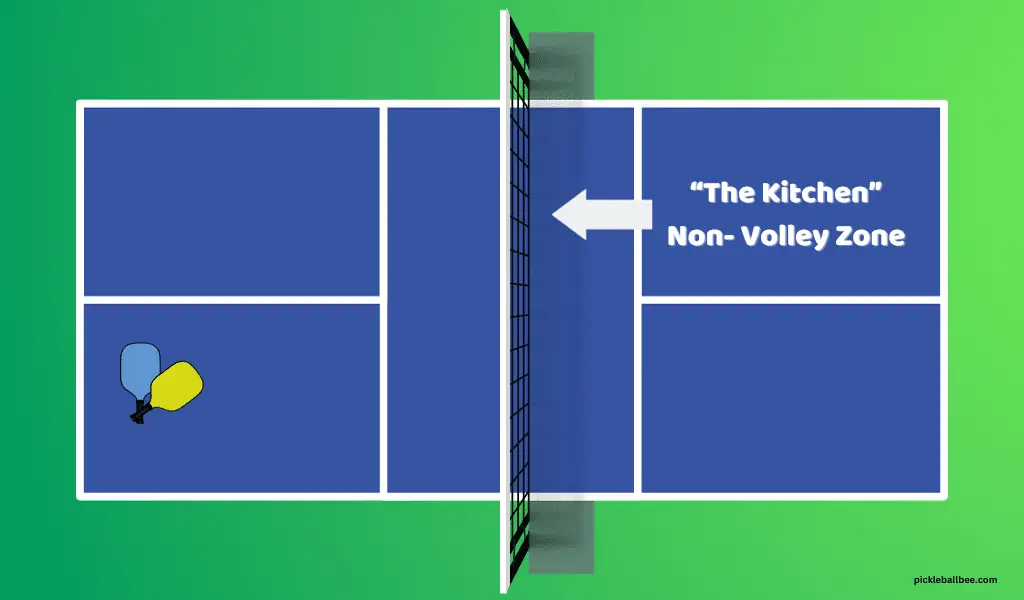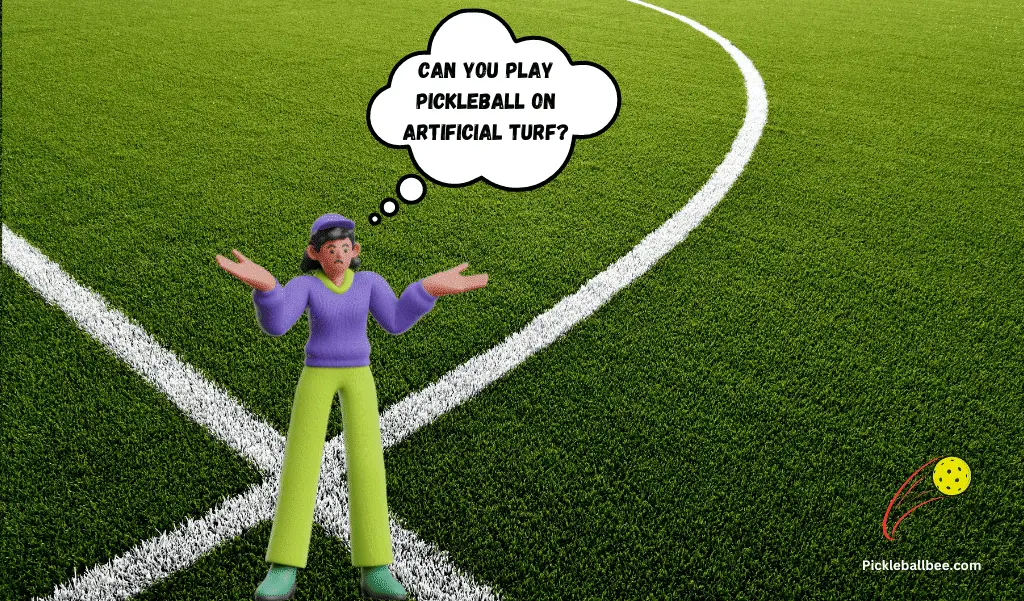In the fast-paced and exciting world of pickleball, players are constantly looking for ways to gain an edge over their opponents. One of the most aggressive shots in pickleball is the spike shot, which involves hitting the ball forcefully downward toward the opponent’s side of the court. In this article, we will explore the possibility pickle ball spike and delve into the techniques, benefits, and strategic considerations associated with this dynamic shot.

Table of Contents
Fundamentals of Pickleball:
Understanding the fundamental game mechanics and rules is crucial to learning the idea of spiking in pickleball. Pickleball is most frequently played in doubles, which pits two teams of two players against one another. In order to earn points and keep the opposing side from scoring as well, the goal is to hit the ball over the net and into the court.
The first serve of the match must be delivered diagonally across the court. Before returning the ball, the receiving team must let it bounce once. Both teams have the option of volleying the ball (hitting it before it bounces) or letting it bounce once before striking it after the initial bounce. Until a mistake, such as sending the ball into the net or out of bounds, the ball remains in play.
What Is Spiking in Pickleball?
Pickle ball spike refers to a forceful and aggressive shot executed by a player to send the ball downward with power and speed. The spike is typically performed when the ball is above the net level and within reach of the player. It involves a quick and forceful downward hit, often executed with a wrist snap, aiming to drive the ball towards the opponent’s side of the court.

The spike is an offensive shot used to put the opponent on the defensive and create a difficult return opportunity. To guarantee the ball arrives within the confines of the opponent’s court, good timing, coordination, and precision are required. The spike can be performed from any point on the court, but it is most usually seen at mid-court or near the net.
Can you Spike in Pickleball?
Yes, you can spike in pickleball. While spiking is not as common in pickleball as it is in sports like volleyball, it is a legitimate technique that some players employ when the opportunity arises.
When executing a pickle ball spike, it is important to time the shot correctly, position yourself well, and generate power with a quick and controlled swing. It is typically performed when the ball is above the net level and within reach. However, it’s important to remember that you cannot spike the ball while standing within the non-volley zone (kitchen), as it is a violation of the rules.
Techniques For a Successful Spike In Pickleball
1. Perfect Your Timing:
Timing is crucial when attempting a pickle ball spike. Wait for the ball to reach the optimal height before initiating your spike.
2. Generate Power:
To execute a successful spike, generate power from your legs, core, and arm swing. Transfer your weight forward as you strike the ball.
3. Aim for Precision:
Instead of simply hitting the ball with brute force, focus on directing it strategically. Aim for open spaces or exploit weaknesses in your opponents’ positioning.
4. Practice Placement:
Experiment with different angles and target areas on the court. The element of surprise can catch your opponents off guard and increase your chances of success.
5. Anticipate and React:
As you prepare to spike, keep an eye on your opponent’s positioning and be ready to adjust your shot accordingly. Adaptability is key in pickleball.
When to Use the Spike Shot
Knowing when to use the spike shot is crucial for maximizing its effectiveness. Here are some situations where employing the spike shot can prove advantageous:
- When the ball is high and allows for a powerful downward hit.
- If your opponents are out of position or struggling to return aggressive shots.
- To break the rhythm of your opponents and disrupt their gameplay.
- During offensive opportunities where you can put pressure on your opponents and increase your chances of scoring points.
The Benefits of Spiking:
Incorporating spike shots or aggressive overhead smashes into your pickleball gameplay can offer several benefits.

Firstly, it allows you to put pressure on your opponents, forcing them to react quickly and potentially make mistakes. Secondly, a well-executed spike can result in a difficult return for the opposing team, increasing your chances of winning the point.
Moreover, pickle ball spike adds an element of excitement and versatility to your gameplay. It showcases your skills and strategic thinking, making you a formidable opponent on the court. However, it’s essential to note that relying solely on spikes can be risky, as they require precise timing and can be more susceptible to errors if not executed correctly.
Mastering the Spike Shot
To become proficient in the spike shot, it’s crucial to practice and develop specific skills. Here are some key techniques and tips to help you master this challenging shot:
- Footwork and Positioning:
Maintain a balanced stance and position yourself correctly to anticipate and reach the ball at the optimal height for a spike. - Grip and Paddle Angle:
Adopt a firm grip on the paddle and adjust the angle to generate maximum power and control during the spike. - Timing and Coordination:
Develop a keen sense of timing to hit the ball at the highest point of its trajectory. Coordinate your body movements for a smooth and powerful shot. - Shot Selection:
Identify situations where a spike shot is appropriate and can give you an advantage. Consider factors such as the ball’s trajectory, your positioning, and the opponents’ positioning. - Practice Drills:
Engage in specific drills to improve your spike shot technique. Work on your accuracy, power, and consistency to enhance your overall performance on the court.
Footwork Techniques in Pickleball for Spiking
So, you’re eager to up your pickleball game, huh? A strong spike can totally intimidate your opponent and set the tone of the match. But hey, it’s not just about smashing that ball; your footwork plays a massive role, too. Let’s break it down.
First off, let’s talk about “the split-step.” As your opponent is about to hit the ball, do a little hop. It’s like you’re a coiled spring, ready to launch in any direction. This split-step gets you into an “action-ready” stance.
Next, the shuffle. You know the drill: keep your feet shoulder-width apart and move sideways by shuffling your feet. Don’t cross them; it’s a surefire way to trip up.
Ah, the pivot. When you see that ball coming, pivot on one foot and rotate your hips. This quick move gives you extra reach and power, almost like winding up a punch. It also opens up your striking zone, making spiking easier.
Don’t forget the last step—approaching the net. After the pivot, explode forward with one or two quick steps. The goal? Getting as close to the net as possible without stepping into the “kitchen” (the no-volley zone).
Remember, practice makes perfect. So get out there and move those feet!
Grip Techniques in Pickleball for Spiking
Alright, you’ve got the footwork down, but what about the grip? Yep, your grip on the paddle is just as important as those fancy foot moves. Let’s dive in.
Firstly, the “Continental Grip” is your best buddy for spiking. Hold the paddle like you’re shaking someone’s hand. This gives you a good balance of power and control. Simple, yet effective.
Ever heard of the “Choke-Up”? It’s not a bad thing here! Slide your hand up the handle for more control. This grip works like a charm when you’re close to the net and aiming for a killer spike.
Ah, the “Vardon Overlap” — it’s not just for golf, you know. Your index finger from the hitting hand overlaps the little finger of your other hand. This grip offers a tight, locked-in feel.
Switching grips mid-game? It’s not crazy; it’s strategic. Sometimes you’ll need to adjust on the fly, depending on the ball’s position and your own. Flexibility is key.
Last but not least, grip pressure. Hold the paddle firmly but not too tight. Imagine holding a bird; you don’t want it to escape, but you also don’t want to crush it.
Well, there you have it. Your footwork and grip are the one-two punch for a killer spike. So, go on and give it your best shot!
Also Read:
- Go Pro In Pickleball -11 Keys To success
Common Mistakes to Avoid

While striving to improve your spike shot, it’s essential to be aware of common mistakes that can hinder your progress. Some of these mistakes include:
- Overhitting the ball and losing control.
- Incorrect footwork and positioning, lead to poor shot execution.
- Failing to anticipate and time the shot properly, resulted in missed opportunities.
- Neglecting other essential shots and becoming overly reliant on spiking.
- Lack of communication and coordination with your doubles partner, leading to confusion and missed shots.
By avoiding these mistakes and focusing on continuous improvement, you can enhance your spike shot and overall pickleball skills.
Pickleball kitchen rules

Ever heard of the pickleball “kitchen”? No, it’s not where you find pickles or cook up a storm! It’s actually a fancy term in the fun-filled world of pickleball, and understanding it can make a world of difference to your game. So, put on your learning cap, and let’s dive in!
First off, let’s imagine a pickleball court. Picture a tennis court, but a bit smaller, and with a net in the middle. Now, right up close to that net, there’s a special zone on both sides. This zone is called the “non-volley zone,” but most folks just call it the “kitchen.” Maybe because it’s a hot place to be in, or perhaps it’s where all the spicy action happens!
Here’s where it gets interesting. When you’re in the kitchen, there’s one big “no-no.” You can’t hit the ball out of the air before it bounces. That’s called a volley. No volleys are allowed in the kitchen! Think of it as an invisible barrier stopping you from taking that shot. But why? Well, this rule is there to make the game fairer and more strategic. Without it, players with a height advantage could just hang near the net and smash balls down without giving the other side a fighting chance.
Now, let’s say the ball does bounce in the kitchen. What then? Good news! You can step into the kitchen, give that ball a good whack, and then, like in a fun dance, you’ve got to hustle back out. It’s kind of like when you touch something hot in the real kitchen and jump back. Only in pickleball, the floor’s not hot, and the game’s just heating up!
So, while you’re playing, remember the kitchen’s main rule: No air-shots or volleys. But after a bounce? Go on, take your shot, and then make your exit. It adds a layer of strategy, making you think twice about every move. The kitchen rule spices things up, making pickleball not just about power but also about planning and quick thinking.
In conclusion, the kitchen is where the magic happens in pickleball. It’s where strategies are cooked up, and games can be won or lost. So next time you’re on the court, keep the kitchen rule in mind, have fun, and maybe, just maybe, serve up some wins!
Conclusion
In conclusion, spiking is indeed possible in pickleball, and it offers a range of benefits for players. The spike shot puts pressure on opponents, increases the chances of winning points, and adds excitement to the game. By mastering the spike shot, players can elevate their gameplay and take control of matches. However, it is crucial to be aware of safety considerations and to practice responsible gameplay. By incorporating spike shots into their arsenal and continuously improving their skills, players can enhance their pickleball experience and achieve greater success on the court.
FAQs:
-
Can beginners attempt pickle ball spike?
While spiking requires skill and practice, beginners can start by developing their basic pickleball techniques and gradually progress to more advanced shots like the spike.
-
Is spiking the only way to score points in pickleball?
No, pickleball offers various ways to score points, including dinks, volleys, and strategic shot placements. Spiking is just one of the many techniques players can use.
-
Can you spike in the kitchen in pickleball?
No, you cannot spike in the kitchen in pickleball. The non-volley zone (kitchen) rules prohibit hitting or volleying the ball forcefully while standing inside it. This rule aims to maintain fair play and prevent players from gaining an unfair advantage near the net.
-
Can you hit down in pickleball?
Yes, you can hit down in pickleball. The spike shot, also known as a downward shot, is a common technique used to hit the ball with power and accuracy towards the opponent’s side of the court.
“Rise above the net, unleash your strength, and spike with purpose. Let the power of your shot inspire fear in your opponents and leave a lasting impression on the pickleball court.”


